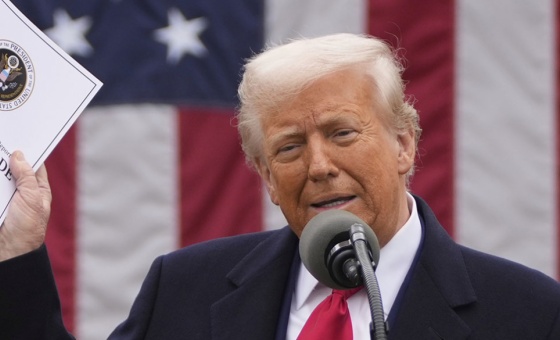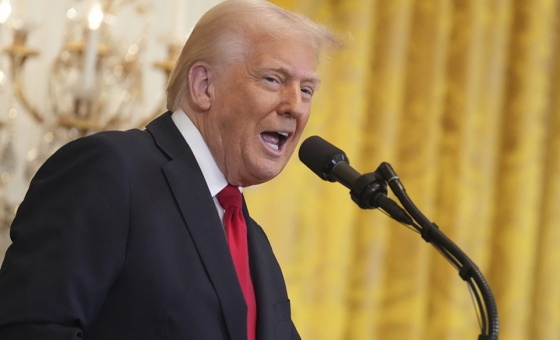This is the last article you can read this month
You can read more article this month
You can read more articles this month
Sorry your limit is up for this month
Reset on:
Please help support the Morning Star by subscribing here
LITHIUM has been around for a very long time. Along with hydrogen and helium, it was one of the three elements synthesised in the Big Bang.
In its elemental form, it is a chalky white alkali metal, soft enough to be cut with a knife. Lithium is unstable due to its high reactivity, and does not naturally occur in elemental form on Earth.
It is typically found in mineral form (combined with other elements) within igneous rocks — formed by the cooling and solidification of molten lava from deep beneath the Earth’s surface.
A type of rock called granitic pegmatite hosts the largest concentrations of lithium-containing minerals. Lithium can be directly mined from these rocks, like in Australia at Greenbushes, the world’s largest lithium mine.
Most igneous rocks contain only trace amounts of the metal. However, geological processes can act to concentrate lithium deposits in basins in the form of brine.
One example is found in the state of Nevada, whose large lithium deposits have recently been identified by the Nevada Bureau of Mines and Geology as key to US national security and economic development.
Nevada is located in North America’s Basin and Range Province, a vast region extending from north-west Mexico over most of the inland western United States. It is characterised by alternating parallel mountains (ranges) and valleys (basins), formed by crustal extension that began around 17 million years ago.
It is this ongoing crustal extension that has caused the accumulation of lithium within the state. Crustal extension refers to the pulling apart of continental plates by distant forces, leading to the stretching and deformation of the plates.
Nevada’s lithium rocks themselves are not rich in lithium-containing minerals. But, due to its reactivity, lithium is highly soluble and easily weathers out of source rocks and enters streams.
The basins of Nevada collect the runoff from these streams. In many places, these basins would eventually drain out to the sea, but Nevada’s desert climate and high topography mean that instead, the water remains and pools, allowing the lithium to concentrate slowly over many years into brine.
Another source of lithium in Nevada is clay. The McDermitt Caldera is an ancient volcano formed when the North American continental plate moved over a “hot spot” in the mantle — similar to the process that created the islands of Hawaii.
When the volcano last erupted, a lake within the caldera (the crater left behind after the eruption) filled with a mineral known as smectite, which contains lithium. Over time, the smectite was altered by hydrothermal fluids (hot groundwater that circulates in the Earth’s crust close to the surface) and became lithium-rich clay.
McDermitt is now one of the world’s largest single deposits of lithium. Although this fact has been known since the 1970s, mining lithium has never been economically viable — until now. Production is expected to begin at the caldera in 2028.
So why does lithium matter so much? And why are the deposits in Nevada particularly important? As the world’s supply of fossil fuels has dwindled, demand for alternative fuel sources has skyrocketed — and so too has the economic significance of lithium.
This significance lies in the fact that lithium-ion batteries are a key component of electric vehicles, like Elon Musk’s Tesla cars, and can also be used for the storage of renewable energy.
US excitement over the Nevada deposits needs to be understood in the context of the global distribution of lithium.
The world’s largest lithium reserves are located in Bolivia, which hosts the largest salt pan (or salar) on Earth, the Salar de Uyuni. This salt flat covers an area of more than 4,000 square miles and contributes to Bolivia’s 23 million tons of lithium deposits — about 50 per cent of the Earth’s total supply.
The crystalline saline material and brines in the salars of Bolivia are residual from a former large lake, Lago Minchin, which acted as an interior drainage basin similar to those in Nevada. As the lake evaporated, the brines became enriched with lithium.
Back in 1990, the Bolivian president signed an agreement with a US-based mining company (Lithium Corporation of America, now known as FMC Corporation), which would have allowed the company to extract as much lithium as it wanted from the salars, giving Bolivia only 8 per cent of the profit.
The deal sparked widespread protest from the campesinos of Bolivia, and in the end, the company went to Argentina to set up its mining production. When Evo Morales and his party, Movement for Socialism (MAS), came to power in 2006, he took a different approach.
Morales wanted to industrialise Bolivia, with mining lithium at the heart of his “resource nationalism” strategy. The aim was to stop US corporations from giving Bolivia only a tiny fraction of the profit of their exploitation of Bolivia’s lithium.
Instead, the benefits of lithium would return to the Bolivian people — by ensuring that the state controlled the extraction and processing of the raw material. These processes are not without environmental challenges, but the government is committed to finding technology that minimises impact on the natural environment.
The steps Morales and his government took to undo the theft of their natural resources included the seizing of transnational mining firms such as Glencore and Anglo-Argentine Pan American Energy; the annulling of a contract with South American Silver (based in Canada) after it refused to halt operations and continued to claim indigenous Bolivian land; the cancellation of an unfavourable deal with German-based company ACI System.
Most importantly, they refused to make a deal with any company (such as Tesla) that did not include their state-controlled company (Yacimientos de Litio Bolivianos, YLB) as equal partners in developing the lithium.
Law 928 prioritises national sovereignty in lithium production with the full participation of YLB at all stages of production. Morales pointed to these actions as directly contributing to a military coup which removed him from power in 2019. After the coup, Elon Musk tweeted in support of the coup, writing: “We will coup whoever we want! Deal with it.”
Ultimately, the coup was defeated, and MAS were restored to power, continuing their commitment to resource nationalism and lithium extraction that prioritises the Bolivian people and their land. It’s possible that other nations with lithium deposits (Chile, Argentina, or Peru) could end up following Bolivia’s lead.
The failure of US business to extract unchecked in Bolivia is what has produced the economic incentive to start mining in Nevada. The battle against foreign exploitation of Bolivia’s abundant raw lithium is vital context for why the US considers lithium a matter of “national security.” Countries with resources needed for US industry may feel less secure in that knowledge.










